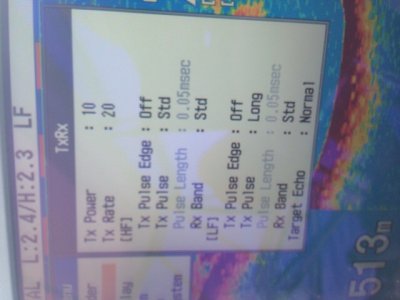A
Anonymous
Guest
Hi,
Set up is a FCV 295 connected to a R309,
I am struggling to get decent bottom definition when sounding up the side of a sea mount on 38khz.even in screen advance 1/1
Any tips?
Will attach pics of screen shot plus settings I am using
Set up is a FCV 295 connected to a R309,
I am struggling to get decent bottom definition when sounding up the side of a sea mount on 38khz.even in screen advance 1/1
Any tips?
Will attach pics of screen shot plus settings I am using






